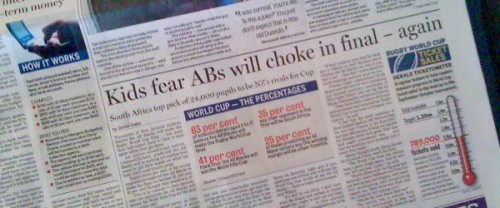Even toddlers use statistics!

New research published in the journal Science from researchers at MIT has shown that toddlers as young as 16 months old are able to make accurate judgments about whether a toy failed to operate due to their own mistake or due to circumstances beyond their control.
The results give insight into how toddlers use prior knowledge with some statistical data to make accurate inferences about the cause of a failed action. These findings are contrary to commonly held educational assumptions that young children aren’t able to distinguish among causes and has implications for early childhood education and for how humans learn in general.
“Infants who saw evidence suggesting the failure was due to their own action tried to hand the toy to their parents for help. Conversely, babies who saw evidence suggesting that the toy was broken were more likely to reach for a new toy, as another one was always nearby.
“That’s the amazing thing about what the babies are doing,” said Schulz. “They can use very, very sparse evidence because they have these rich prior beliefs and they can use that to make quite sophisticated, quite accurate inferences about the world.”
“It was fascinating to see that they are even sensitive to this problem of figuring out whether it’s them or the world to begin with,” added Gweon, “and that they can track such subtle statistical dependence between agents, objects and event outcomes to make rational inferences.”



